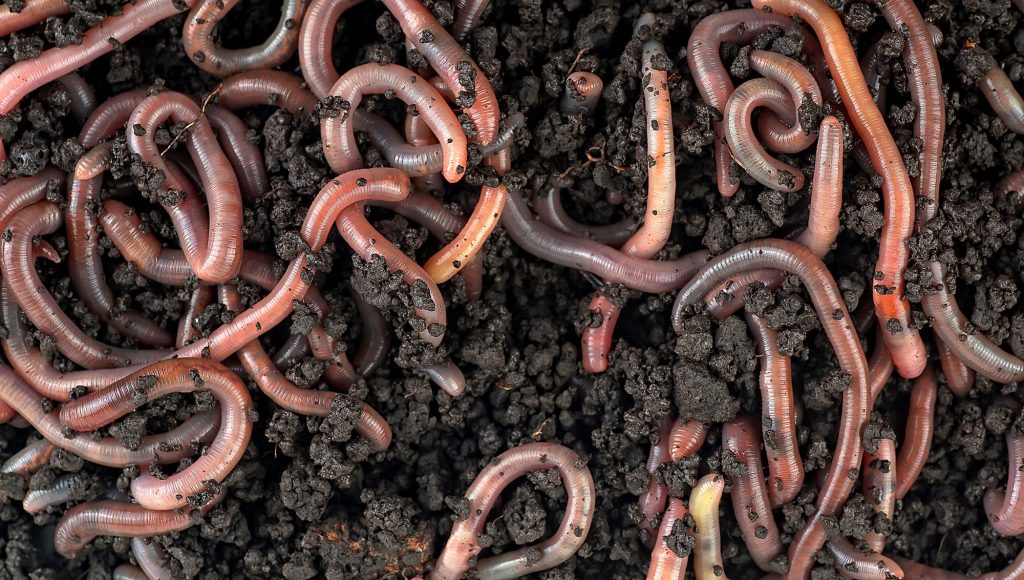 Though they may seem universal now, earthworms are relatively recent arrivals to the area.
Though they may seem universal now, earthworms are relatively recent arrivals to the area.
Adobe Stock Image/Licensed by Walking Mountains Science Center
Going about our daily lives, many of us tend not to give worms any thought. They’re wiggly, strange, typically underground and only likely make in-person appearances when we’re gardening or after a heavy rain. However, worms have rich worlds of their own and can be an incredibly useful resource — as well as a significant ecological threat.
Earthworms, like red wigglers and other composting worms, are commonly used to promote healthy gardens. The function of an earthworm is simple: they eat soil and grind it up, using an organ similar to a chicken’s gizzard, and then poop it out. Worm droppings are called “castings” and because of the worm’s in-depth digestive process, they are nutrient-rich and contain more microorganisms than the surrounding soil.
When worms burrow into the earth they mix up existing nutrients in the soil and create tunnels through which air, water and plant roots can travel. Plants growing on soil filled with worms can spread their roots deeper and further, which increases their odds of survival. The strategic use of worms in gardening to prime the soil is called “vermicomposting.”
Though they may seem universal now, earthworms are relatively recent arrivals to the area. In fact, no species of earthworm is native to Colorado: every species in our soil today was introduced within the last 150 years. While no species of earthworm is considered invasive, their presence in non-garden soil can be destructive to forest and grassland ecosystems.
Colorado does however boast a few native worm species — one of which has never been seen outside our state! Limnodrilus sulphurensis, aka the Sulphur Cave worm, is found only in Sulphur Cave in Steamboat Springs. These tiny, blood-red worms live in conditions 10 times more acidic than ocean-floor volcanic vents, one of the harshest environments on Earth.

Support Local JournalismDonate
Though they may be less agriculturally useful than the earthworm, the Sulphur Cave worm is an ongoing mystery to scientists and has potential uses in science and medicine. Scientists even use extremophile species like these worms to hypothesize about paths of development of alien life!
Though no common species of earthworm are considered invasive, we must be alert to how and where we use them and what the potential impacts of a non-native species in our soil might be. It’s also important to stay on the lookout for prominent invasive species throughout the country.
A current, high-profile example of this is the Asian jumping worm. Asian jumping worms stir up soil, leaving it vulnerable to invasive plants and reducing food and resources for native species. Despite being small, their impact on the ecosystem is enormous.
As of yet, no Asian jumping worms have been spotted in Colorado, but it’s important to be on the lookout in case that changes. The best way to identify an Asian jumping worm is by the smooth, milky band around its upper body. The appearance of these worms in Colorado would be bad news for all our ecosystems, so it’s important to stay vigilant.
The humble worm, despite being small in size and spending most of its life within the earth (or deep inside toxic caves) has a huge influence on our world, and it’s one that’s easy to overlook. Though worms may not be exciting or easily visible, their quiet presence underneath our feet is a significant factor making our ecosystem what it is today.
Fiona Goodman is a Naturalist at Walking Mountains. She enjoys the outdoors not just for the views, but also to look for the creepiest and crawliest of small creatures in the dirt along the way.
Source link : http://www.bing.com/news/apiclick.aspx?ref=FexRss&aid=&tid=66d49cac692b477f99bcc0799925f06b&url=https%3A%2F%2Fwww.vaildaily.com%2Fnews%2Fworms-of-colorado-the-good-the-bad-and-the-strange%2F&c=9531644480032829205&mkt=en-us
Author :
Publish date : 2024-09-01 05:06:00
Copyright for syndicated content belongs to the linked Source.





